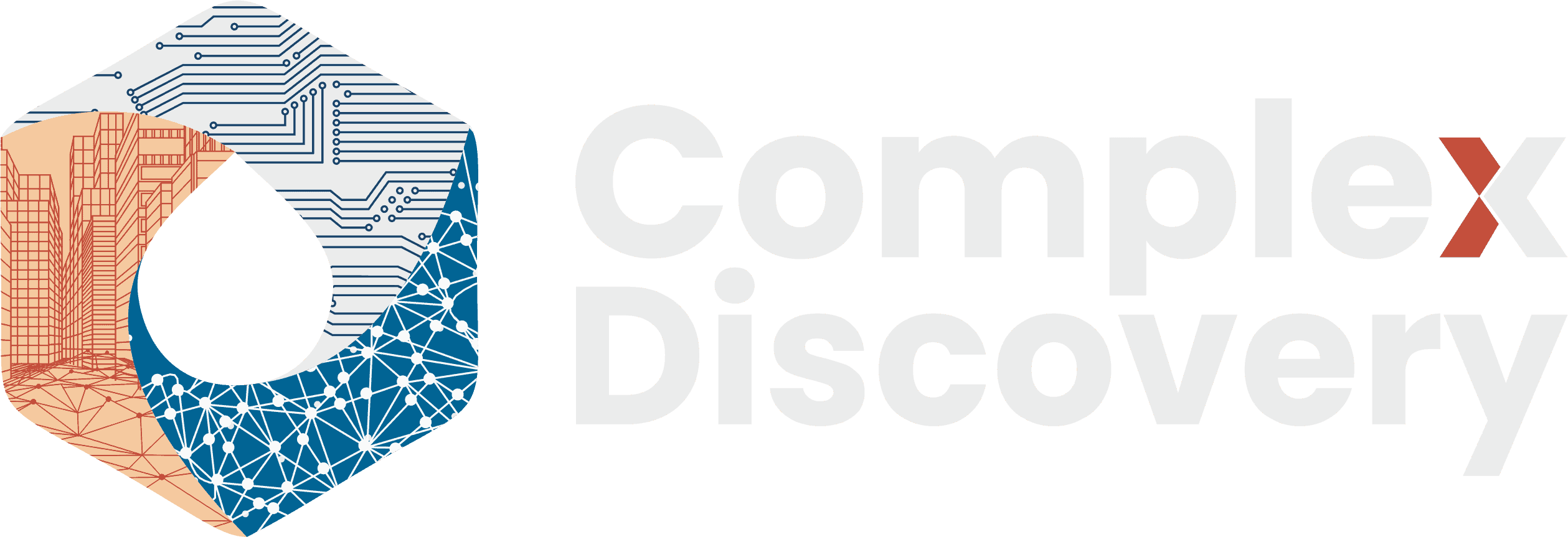Editor’s Note: This Thanksgiving, as we reflect on what we’re thankful for, professionals in cybersecurity, information governance, and eDiscovery may find renewed appreciation for the human oversight that underpins so much of our digital infrastructure. But the findings from The Iceberg Index: Measuring Workforce Exposure Across the AI Economy, a report from MIT and Oak Ridge National Laboratory developed in partnership with state AI policy offices, signal that this oversight model is rapidly changing—and not in the future, but right now.
The report reveals that nearly 12% of the U.S. labor market’s wage value—especially in high-compliance sectors like finance and administration—can already be executed by AI agents. This assertion is not a forecast; it is a present-day measurement of technical capability. For those who govern data, enforce access controls, and manage legal discovery, the implications are immediate.
We are entering an era where digital work, once governed by people, is increasingly generated and managed by machines. That shift challenges us to reassess data lineage, redefine “custodian” responsibilities, and extend our oversight frameworks to include autonomous systems. The Iceberg isn’t just about jobs—it reveals a vast and growing layer of digital labor now operating beneath the surface of organizational awareness.
Content Assessment: Thankful for Human Oversight? MIT's Iceberg Index Reveals the AI Already Beneath Us
Information - 93%
Insight - 92%
Relevance - 91%
Objectivity - 92%
Authority - 92%
92%
Excellent
A short percentage-based assessment of the qualitative benefit expressed as a percentage of positive reception of the recent article from ComplexDiscovery OÜ titled, "Thankful for Human Oversight? MIT's Iceberg Index Reveals the AI Already Beneath Us."
Industry – Leadership Beat
Thankful for Human Oversight? MIT’s Iceberg Index Reveals the AI Already Beneath Us
ComplexDiscovery Staff
The scary part about AI and jobs is no longer what shows up in the headlines. It is the larger share of work, buried beneath the surface of today’s layoffs, that a group of researchers now says they can finally see.
In The Iceberg Index: Measuring Workforce Exposure Across the AI Economy, the team estimates that artificial intelligence could already perform tasks equal to 11.7% of U.S. labor market wage value—approximately $1.2 trillion. The analysis maps roughly 151 million workers across 923 occupations, 32,000 skills, and more than 3,000 counties. The overlap is not confined to coding; it reaches across the administrative, financial, healthcare, logistics, and professional services work that keeps organizations running..
For cybersecurity, information governance, and eDiscovery professionals, this is not an abstract macroeconomic statistic. It is a preview of where repeatable cognitive and compliance-oriented tasks are headed, and where employers and service providers who fail to plan may find their teams blindsided.
What the Iceberg Index Really Measures
The Iceberg Index does something labor economists and AI policy teams have been trying to do for years: build a workable “digital twin” of the U.S. labor market. In that twin, every worker is represented as an agent with a location, occupation, and a bundle of skills drawn from standardized taxonomies like O*NET and federal employment data. On the other side, the researchers catalogue upward of 13,000 AI tools—copilots, workflow automation platforms, enterprise systems—and tag them against the same skills.
Then they ask a sharp question: for each occupation, what share of its wage value comes from skills that AI systems have already demonstrated they can perform at a usable level? That share becomes the Iceberg Index for that job, industry, or region.
The result is a skills-centered measure of “technical exposure,” not a prediction of layoffs. It does not say a given percentage of workers will lose their roles; it says AI could, in principle, handle that slice of their tasks if adoption, quality, regulation, and management choices align. The researchers liken it to an earthquake risk map, which shows where fault lines lie rather than predicting exactly when an event will strike.
Looking only at visible AI adoption in technology and computing jobs—what the team calls the “Surface Index”—the story is familiar. AI exposure across software engineering, data science, and related roles amounts to about 2.2% of the national wage value, or around $211 billion. That is the part already in the headlines, visible in tech‑sector restructuring and the rise of code copilots. However, expanding the lens to include administrative, financial, and professional services tasks that existing AI tools can already perform forces a rethink. On that view, exposure climbs to 11.7% of wage value—roughly five times the visible tech slice—and spreads across every state.
That gap between 2.2% and 11.7% is the real iceberg, a reminder that the work most at risk of technical overlap with AI is not just code but cognition.
Where the Exposure Actually Lives
The largest exposure sits in white‑collar work that rarely anchors automation stories. The Iceberg Index team finds substantial technical overlap between AI tools and tasks in human resources, logistics coordination, back‑office finance, and document‑heavy professional services.
Industrial and “heartland” states make the pattern concrete. Rust Belt economies such as Ohio, Michigan, and Tennessee show modest AI exposure if you only look at technology jobs, but they reveal double‑digit exposure once you include administrative and coordination roles that sit around factories and logistics hubs. In Tennessee, for example, the Surface Index is roughly 1.3%, but the broader Iceberg Index reaches 11.6%, driven by administrative functions that show up to ten times greater technical exposure than visible technology occupations.
Other outliers overturn simple assumptions about where AI risk lives. States like Delaware, South Dakota, and Utah register Iceberg values above better‑known tech hubs because their finance and administrative sectors form tight clusters of automatable skills. California still scores high, but its exposure is spread across a more diversified economy.
For cybersecurity, information governance, and eDiscovery professionals, the message is straightforward. Jobs built on digital cognition rather than physical presence are exactly the roles the Iceberg Index flags.
Inside the SOC, Data Office, and eDiscovery War Room
The Iceberg Index does not categorize the cybersecurity, information governance, or eDiscovery ecosystems as separate categories, yet its logic aligns directly with how these domains are evolving. Security operations centers already lean on automation for alert triage and log correlation. As language models become more capable, the overlap between tasks such as incident summarization and report drafting will expand. On Iceberg’s terms, early‑career analyst tasks sit in the high‑exposure band. This situation creates a hidden “Shadow AI” risk where analysts might use unvetted tools to speed up workflows, unwittingly expanding the attack surface.
Information governance teams face a similar transition as they sit atop chains of repeatable workflows such as retention schedules, legal holds, and policy attestations. These workflows decompose into skills like document classification and template drafting, all of which map cleanly to the behavior of current AI tools. The challenge shifts from managing records to managing the agents that create them.
The field of eDiscovery has already experienced one wave of algorithmic innovation with Technology-Assisted Review. The next wave will press into privilege screening and pattern discovery. While human judgment will still anchor decisions, the tasks leading up to that judgment are increasingly automatable. This automation raises a new “custodian” problem: if an AI agent generates a liable document or deletes evidence, how is that action preserved and produced? Service providers must prepare for an era of “Agent Discovery.”
From Sandbox to Strategy
The Iceberg Index is not staying on paper. States such as Tennessee, North Carolina, and Utah are feeding their own labor data into the platform to test workforce strategies. The sandbox lets them run scenarios to see what happens when reskilling funds are targeted to specific skill clusters or when infrastructure decisions pull in data center jobs.
Policymakers are already using that view to stress‑test ideas, such as automating healthcare administration so nurses can spend more time on patient care. Traditional economic metrics offer limited help here. When the team compares state Iceberg scores to GDP and unemployment, those signals explain under 5% of the variation in exposure. A low unemployment rate does not guarantee a low AI‑risk rate.
A More Complicated Picture Than Job‑Loss Headlines
The Iceberg Index arrives in the middle of a wider research conversation that complicates simple job‑loss narratives. The study emphasizes that exposure does not equal replacement; often, it leads to augmentation or role restructuring.
For cybersecurity, information governance, and eDiscovery audiences, the most relevant lesson is not an unemployment forecast. It is the realization that the same analytical mindset used to quantify breach risk can now be applied to workforce skills. Organizations that start measuring that overlap early will be better positioned to decide which parts of their iceberg they reshape and which they defend. This Thanksgiving, the case for gratitude toward human oversight is clear—but so is the case for preparation. The Iceberg Index offers leaders in these fields a prompt: which of your team’s tasks are already within AI’s technical reach, and what does oversight look like when the work is done by agents instead of analysts? The organizations that answer those questions now won’t be caught off guard when the iceberg surfaces.
News Sources
- The Iceberg Index: Measuring Skills-centered Exposure in the AI Economy (Project Iceberg / MIT–Oak Ridge Report)
- MIT report: AI can already replace nearly 12% of the U.S. workforce (Fortune)
- AI can already do the work of 12% of America’s workforce, MIT researchers find (CBS News)
- MIT simulation shows AI can replace 11.7% of U.S. workers worth $1.2 trillion in salaries (Tom’s Hardware)
Note: The Iceberg Index research was supported by an Oak Ridge National Laboratory compute award, Anthropic API credits, and MIT funding.
Assisted by GAI and LLM Technologies
Additional Reading
- From Brand Guidelines to Brand Guardrails: Leadership’s New AI Responsibility
- The Agentic State: A Global Framework for Secure and Accountable AI-Powered Government
- Cyberocracy and the Efficiency Paradox: Why Democratic Design is the Smartest AI Strategy for Government
- The European Union’s Strategic AI Shift: Fostering Sovereignty and Innovation
Source: ComplexDiscovery OÜ




























